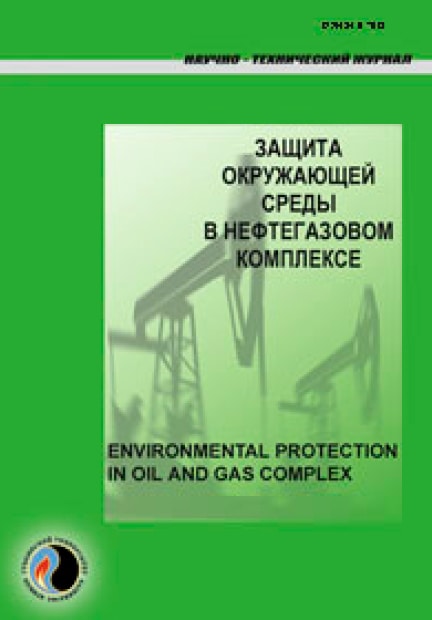Reducing of injuries by implementing a system for allowing access of subcontractor employees to the industrial facility
UDC: 331.452
DOI: -
Authors:
FEDOSOV ARTEM V. 1
1,
TAZHETDINOVA AISULU A. 1
1,
TAZHETDINOVA AZALIYA A. 1
1
1 Ufa State Petroleum Technical University, Ufa, Russia
Keywords: occupational safety, labor safety, subcontracting organization, competency-based approach, employee authorization, high-risk work, occupational health and safety management system, injury rate, industrial facility, employee's health condition, employee qualification
Annotation:
The authors of the article propose a method for admitting subcontractor employees to the work at the production site, making the risk of subcontractor employees injuries will be minimized. This goal is achieved by evaluating the subcontractor employee based on three criteria – the employee's qualifications, their health status, and their level of knowledge, skills, and abilities. The verification of the "qualification" criterion involves analyzing the validity and authenticity of certificates, licenses, and other documents to ensure their relevance and prevent forgery. The assessment of the employees "health status" criterion should be based on a medical certificate on the employees fitness to perform their duties. The "level of knowledge" criterion includes conducting tests covering modules related to the types of work the employee performs. Additionally, automating the method of admitting subcontractor employees to the production site is suggested. Establishing a control and safety assurance mechanism on the site helps reducing the likelihood of injuries and occupational illnesses among subcontractor employees.
Bibliography:
1. Sravnitel'nyy analiz kontseptsiy kul'tury bezopasnosti na proizvodstve / N.V. Vadulina, V.I. Litvinova, O.V. Konstantinova [i dr.] // Bezopasnost' truda v prom-sti. – 2021. – № 9. – S. 20–25. – DOI: 10.24000/0409-2961-2021-9-20-25
2. Analiz trebovaniy zakonodatel'stva Rossiyskoy Federatsii v oblasti obucheniya voprosam okhrany truda / A.V. Fedosov, A.A. Tazhetdinova, V.A. Nasibullina, O.V. Konstantinova // Evraz. yurid. zhurn. – 2023. – № 4(179). – S. 395–396.
3. Problemy zakonodatel'stva po okhrane truda i puti ikh resheniya / A.V. Fedosov, A.A. Tazhetdinova, A.A. Tazhetdinova, A.M. Ganiev // Evraz. yurid. zhurn. – 2023. – № 9(184). – S. 241–242.
4. Bakhonina E.I., Nasibullina V.A. Obzor izmeneniy v zakonodatel'stve, ustanavlivayushchem trebovaniya k otsenke professional'nykh riskov na predpriyatii // Bezopasnost' tekhnogennykh i prirodnykh sistem. – 2022. – № 2. – S. 31–35. – DOI: 10.23947/2541-9129-2022-2-31-35
5. Upravlenie riskom dlya obespecheniya bezopasnosti zhiznedeyatel'nosti / A.V. Fedosov, N.Kh. Abdrakhmanov, I.I. Badrtdinova [i dr.] // Bezopasnost' zhiznedeyatel'nosti. – 2021. – № 10(250). – S. 28–35.
6. Solodovnikov A.V., Shabanova V.V., Abdrakhmanov N.Kh. Audit promyshlennoy bezopasnosti opasnykh proizvodstvennykh ob"ektov neftegazovogo kompleksa // Elektron. nauch. zhurn. Neftegazovoe delo. – 2022. – № 1. – S. 5–27. – DOI: 10.17122/ogbus-2022-1-5-27
7. Tazhetdinova A.A. Primenenie kompetentnostnogo podkhoda v proizvodstvennykh predpriyatiyakh // Aktual'nye voprosy ekonomiki i upravleniya v neftegazovom biznese: sb. nauch. tr. IX Vseros. nauch.-prakt. konf., Ufa, 16 maya 2023 g. – Ufa: UGNTU, 2023. – S. 165–168.
8. Bakhonina E.I., Vershinina E.A., Yamaletdinova K.Sh. Rol' kul'tury bezopasnosti pri organizatsii i vypolnenii rabot povyshennoy opasnosti // Zashchita okruzhayushchey sredy v neftegazovom komplekse. – 2023. – № 4(313). – S. 48–53. – DOI: 10.33285/2411-7013-2023-4(313)-48-53
9. Efimova A.V., Gradoboeva K.V., Vadulina N.V. Vliyanie ergonomicheskikh pokazateley na bezopasnost' proizvodstva i proizvoditel'nost' truda // Problemy sbora, podgot. i transp. nefti i nefteproduktov. – 2018. – № 5(115). – S. 134–141. – DOI: 10.17122/ntj-oil-2018-5-134-141
10. Garipov R.F., Sharafutdinova G.M., Barakhnina V.B. Analiz riskov na osnove rezul'tatov otsenki kul'tury bezopasnosti // Bezopasnost' truda v prom-sti. – 2019. – № 9. – S. 82–88. – DOI: 10.24000/0409-2961-2019-9-82-88

